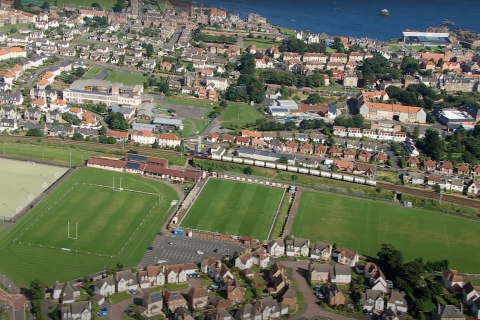How liberalised is the EU rail freight market?

The liberalisation of the rail freight market in the EU is developing well. In 2021, there is an almost equal representation of incumbents linked to a holding company and the private companies, or subsidiaries of large holdings that act like a private company. And this is a good thing, believes industry association ERFA, as private companies are “distinctively sharper, simpler, and better…albeit on a narrower offering”.
The European Rail Freight Association (ERFA) drew these conclusions in a study titled ‘European Rail Freight Market Competitive Analysis and Recommendations’, conducted between December 2021 and March 2022. The findings were presented last week at the celebration of the 20th anniversary of the association.
Public vs private
ERFA does not refer to the market players as public versus private, but uses another terminology to describe the distinction, namely incumbents versus challengers.
“Incumbents are the national historic incumbents in a country linked to a holding company. The term challenger is used instead of private company, because an incumbent active in another country acts more like a private company than a national incumbent in does in its own country. For instance, DB Cargo Polska acts and operates very differently to DG Cargo”, explains Conor Feighan, ERFA Secretary General.
The figures
And these challengers are doing well. Whereas they moved about 17 per cent of the rail freight volumes (based on ton-kilometers) in 2007, in 2020 their market share reached 48 per cent. “We have now reached a market structure and market shares where challengers and incumbents compete at eye level”, commented ERFA President, Dirk Stahl.

In several EU markets the incumbents have even lost their dominance, or have disappeared following privatisations. This is the case in for example the Netherlands and Belgium, where there no longer any incumbents on the market, as all freight rail operations are privatised.
In France, Switzerland and Austria the incumbents still defend a high market share of between 64-67 per cent. In Italy, Poland and Germany the market share of incumbents dropped below 50 per cent.
Why this is a good thing
In its study ERFA praises the business of the challengers, as they are “efficient, growth-focused, and drive innovation in customer service and deployment of new technology”.
In contrast with the incumbents, they focus on a more narrow business and geographical area, and they are lean and agile, in comparison to the complex legacy processes of the holding companies. This makes them distinctively sharper, simpler, and better, the group says, although their offering is often limited to block trains or intermodal traffic. Incumbents often include a wider offering.

More in the future
According to ERFA, the number of challengers will only increase over the years to come. “As challengers are especially strong in the growing markets of the international intermodal business, it is expected that over the next few years, they will reach a market leadership position.
“Challengers will have a decisive role to play in modal shift and will contribute to the Green Deal”, it also states. This is because they come with specific demands for the Single European Railway Area and the broader Regulatory framework, the company explains.
“Over the years, challengers have evolved their business models to seamless international production, focused mixed usage of own and leased locos and drivers and optimized production concepts whilst facing strong intramodal competition.”
You just read one of our premium articles free of charge
Want full access? Take advantage of our exclusive offer





